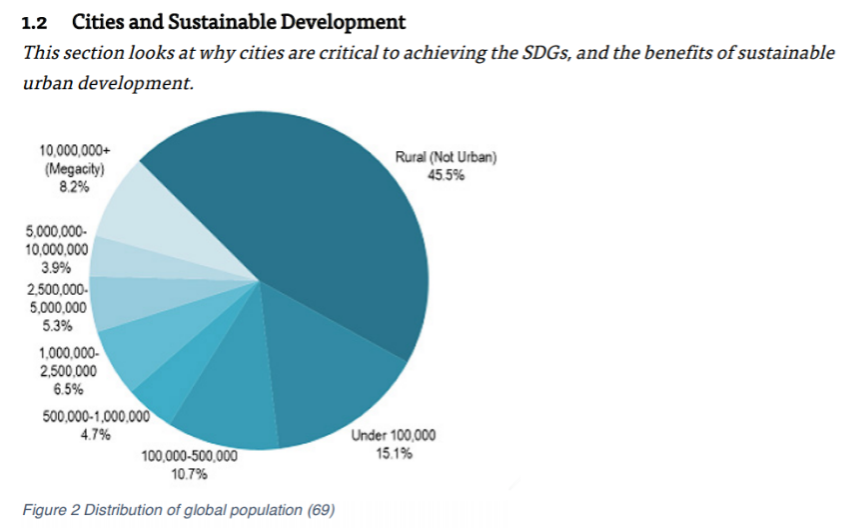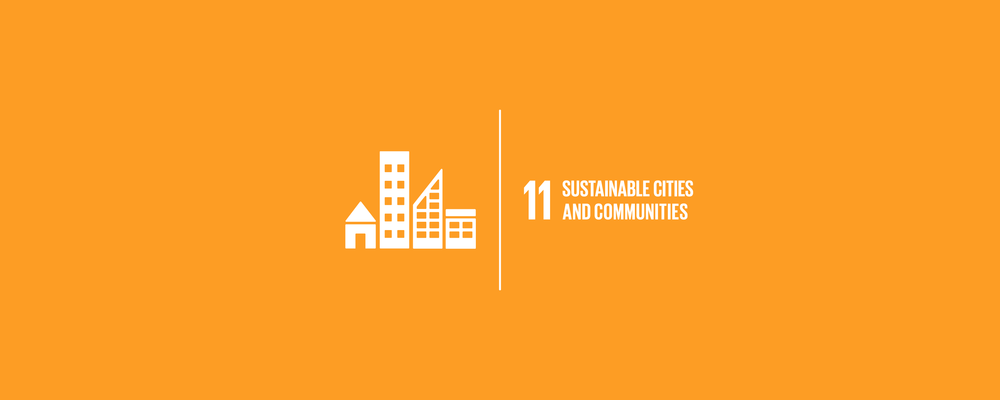This Sustainable Development Solutions Network (SDSN) report was written for municipalities to make progress on the Sustainable Development Goals. The SDGs provide a roadmap to sustainable and balanced development. Sustainable human settlements, both cities and rural areas alike, are critical for our planet’s health.
SDG 11 is the ‘cities’ goal, which recognizes and prioritizes the importance of sustainable, inclusive, resilient, and safe cities. There are concerns that Goal 11 “may promote separation between urban and rural areas,” but Goal 11 refers to all human settlements, cities and rural communities alike. Organizations who provide reports such as this one, whose focus is to help cities and urban areas, should construct and provide a toolkit for rural areas as well.

The 2011 IFAD Rural Poverty Report states 55% of the world’s population lives in rural areas, about 3.3 billion people in 2010. About 34% of these 3.3 billion people live under $1.25 a day and 70% of the developing world’s 1.4 billion extremely poor people are living in rural areas. These numbers are a bit dated, but the impact is still relevant. The World Bank’s updated number of those living in rural areas worldwide to be 46%, still a very large number of people. With our human family numbering around 7.3 billion people, 46% is still 3.358 billion people, which suggests the 2011 numbers are still very plausible.
The points made in this report to promote sustainable cities and inclusive development apply to cities as well as rural areas. Each bullet point below summarizes a part of the report and can be applied to both urban and rural areas.
- Local governments play a key role in defining local SDG policy and programming, as well as monitoring progress. What’s needed for local leaders are access to development resources and a ‘Sustainable Development Roadmap’ with concrete goals and targets to help settlements become more sustainable.
- Initiate an inclusive and participatory process by stimulating public participation, increasing political alignment between stakeholder groups, by promoting the convergence of efforts by different development actors, and ensuring the inclusion of marginalized demographic groups and communities.|
- A local SDG agenda should be prioritized by needs the community deems important and the targets should be relevant, achievable, and correspond to the local government mandate.
- Sustainable SDG implementation needs policy coherence, multi-sectoral planning, and reflexive and responsive policy-making.
- Monitoring and evaluation processes are important to gauge local SDG progress. The best M&E practices for monitoring local SDG progress are program performance administration, accurate settlement data, and evaluations, preferably external.
- There is an opportunity for decentralized governments to have more power over SDG implementation and success. Cooperation and partnership with local government maximizes effectiveness for SDG success.
- The triple bottom line of social development, economic development, and environmental protection calls for integration across government and policy by working across sectors, encouraging coordination among institutions, aligning development goals across government, and promoting multi-sector planning.
- Adequate municipal finance will be crucial for the accomplishments needed for the SDGs to be successful. Cities should explore alternative financing mechanisms.
- All levels of government will have to build institutional capacity to achieve the SDGs.
- Policy frameworks are a set of principles and long-term goals that form the basis of legislation and regulations, giving overall direction to the planning and development for a country/region, or within a sector of operation. Policy frameworks will need to be shifted and made to be more enabling for the SDGs to be achieved.
A rural report need not be a completely new project. The processes outlined in this report to localize government and integrate participatory practices applies to rural areas as well. The success of Goal 11 will be best met when all local governments are transparent and inclusive. Delving into the subnational level of government is critical for the success of the SDGs; as much as 65 percent of the SDG agenda may not be fully achieved without the involvement of urban and local actors. However, a focus on urban development only is detrimental for the inclusive growth between urban and rural areas. A proportional amount of resources should be available for rural areas to ensure Goal 11 and all of the SDGs are met.
Rural poverty statistics from IFAD report and presentation.


